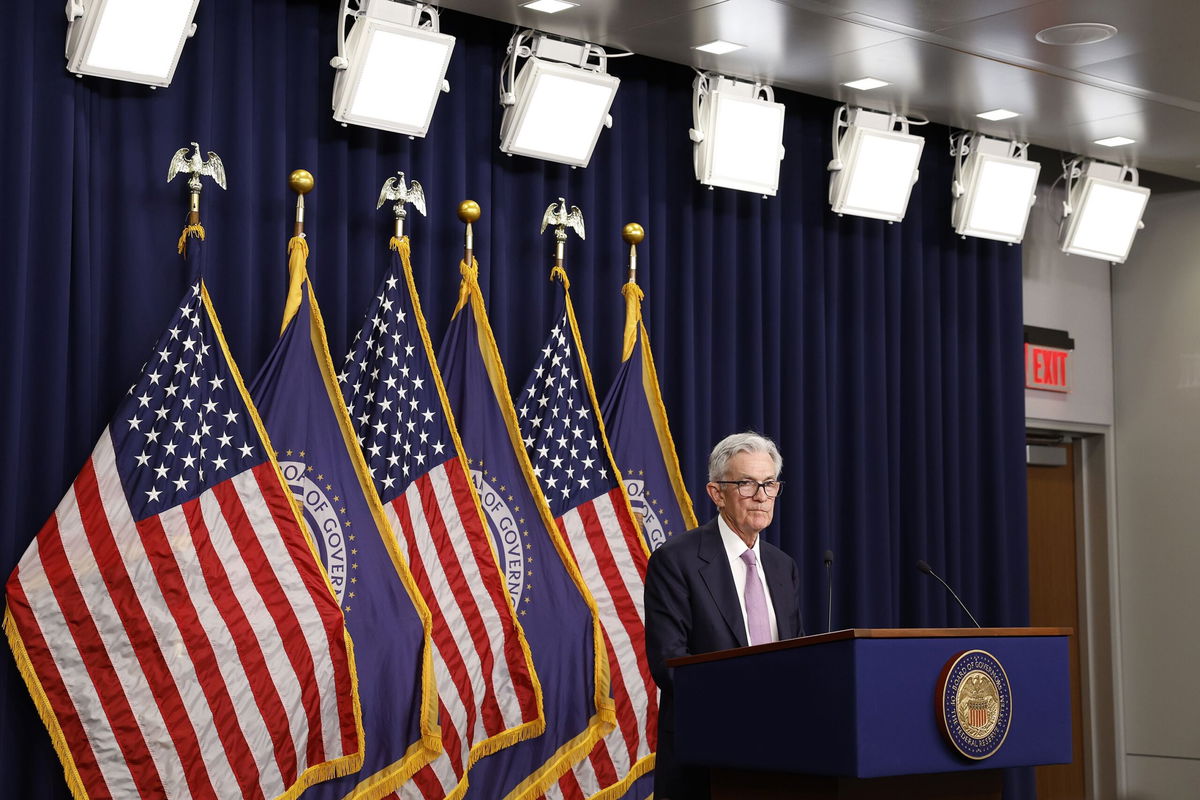The world is about to get some much-needed clarity on the US economy’s future

Federal Reserve Chair Jerome Powell speaks at a news conference in Washington
By Bryan Mena, CNN
Washington (CNN) — A dense fog clouding the US economy could soon clear.
For months, US consumers and businesses have felt some degree of paralysis from the upcoming presidential election, putting off purchases and investments until the world knows who will move into the White House, according to surveys and comments from corporate executives.
Vice President Kamala Harris and former President Donald Trump both offer economic agendas that broadly aim to improve affordability and strengthen the economy, but each have starkly different approaches — which would result in different effects on taxes and inflation. But businesses may not get the clarity about America’s economic policy direction right away: Polls show a tight race, which could mean it will take some time to determine who the next president will be.
One bit of clarity they’re sure to get: The Federal Reserve’s latest interest rate decision, due to be announced Thursday.
The Fed lowered borrowing costs in September for the first time in more than four years while signaling additional rate cuts. But a slew of economic figures have been released since the decision, which is important because the Fed’s decision are guided by what those figures show. Chair Jerome Powell’s remarks at a post-meeting news conference Thursday could shed some light on whether Fed officials’ earlier expectations for the pace of rate cuts still hold.
Don’t expect all lingering uncertainties to be answered this week. Still, America’s wait-and-see posture could, at the very least, begin to thaw.
A choice of two different economic realities
Because the outcome of the election will set the course for the economy in the coming years, it could be prudent to put off pivotal decisions such as expanding a business or buying a home until after the fact.
Trump’s economic vision calls for drastic changes, such as mass deportations and high across-the-board tariffs, while the Harris agenda proposes more measured solutions, such as restoring an expired extension to the child tax credit and increasing a tax deduction for startup expenses.
While the endgame for both candidates is to provide everyday Americans and businesses some relief, a survey of economists by The Wall Street Journal showed that more than two-thirds (68%) of respondents believe prices would rise faster under Trump’s plan than Harris’. High tariffs are a key part of Trump’s economic plan, and they threaten to raise costs for businesses since higher tariffs are paid by US-based importers, not foreign countries as Trump claims. That would also eventually result in faster consumer inflation.
A recent quarterly survey of chief financial officers at small and major companies across industries by two regional Federal Reserve banks and Duke University showed that nearly a third of respondents said they “postponed,” “scaled down,” “delayed indefinitely” or “permanently canceled” their short-term and long-term investment plans this year because of uncertainty over the election’s outcome.
“Uncertainty in the outcome of the upcoming election has resulted in several risk analysis studies to be prepared,” a transportation equipment manufacturer said in the Institute for Supply Management’s latest survey of manufacturers, released Friday.
Consumers are also feeling hesitant to make any major purchasing decisions, such as a home.
Election uncertainty might be a reason why sales of previously owned homes have been so sluggish in recent months, said Lawrence Yun, the chief economist of the National Association of Realtors.
“Maybe people are just waiting to see what the results of the election will be before making a major decision, like home buying or home selling,” Yun said in a recent call with reporters. “Maybe after the election we’ll see some robust gains.”
Waiting on the Fed to continue cutting rates
The world is also watching closely to see if US interest rates are headed lower. That seems to be the case at the moment.
The government’s latest employment figures released Friday showed the job market is cooling in an orderly fashion, not falling off a cliff, when stripping out the temporary effects of recent labor strikes and natural disasters on data.
Fed officials have said in recent speeches that they’re committed to keeping the labor market intact and think interest rates are still at restrictively high levels. So, since the job market isn’t heating back up, after better-than-expected job growth figures for September, that means another rate cut is on track to be rolled out this week. Investors are betting with near certainty that the Fed will deliver a quarter-point cut, according to futures.
Lower rates could entice home buyers to come off the sidelines, and for businesses it could continue plans that have “baked in” lower rates. It’s now just a matter of waiting for lower rates to come about.
The-CNN-Wire
™ & © 2024 Cable News Network, Inc., a Warner Bros. Discovery Company. All rights reserved.